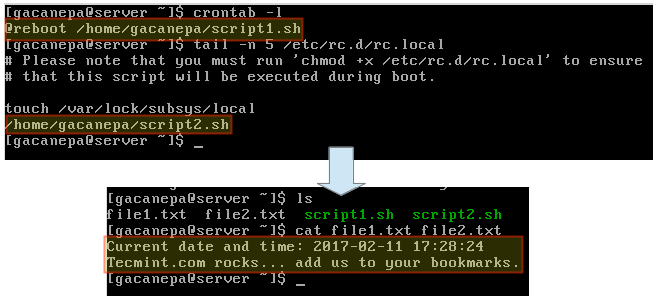

- #AN SCRIPT.SH FOR RUNNING A JAVA PROGRAM ON MAC HOW TO#
- #AN SCRIPT.SH FOR RUNNING A JAVA PROGRAM ON MAC INSTALL#
#AN SCRIPT.SH FOR RUNNING A JAVA PROGRAM ON MAC INSTALL#
add a shebang with the path to your Java install as first line, for example #!/opt/jdk-11/bin/java -source 11.write a self-contained source file with a main method.run it with java -source 12 -enable-preview Switch.java.write an experimental class with a main method.throw it at the JVM with java Script.javaīecause it's often needed, you should by default add -source, though.įor example when experimenting with preview features:.write a self-contained class with a main method.The Linux command line has a very simple tool called echo that simply prints to the terminal whatever you pass to it: Lambdas and streams, local-variable type inference with var, the upcoming switch expressions - all of these make Java quite expressive and easy to achieve results with. The second bullet feels true, but I'm not sure whether that's actually still the case.Īdmittedly, things like Java's file system interaction and HTTP requests are powerful but not exactly elegant. The third is definitely true, although it would be interesting to see whether we could add Graal native images to the mix. Java's programming model is not conducive to quick resultsĪs we've discussed at length, the first bullet is no longer true.compilation and execution is a two-step process.

▚"Are You Serious?!"Īs I see it, there are three criticisms of writing scripts with Java: This keeps the compiler from barfing while preserving line numbers, which is handy for fixing compile errors. java.īefore passing the file to the compiler, the JVM will replace the shebang line with an empty one. If a script file starts with a shebang line, the file name must not end in. Unlocking these features requires special compiler and JVM commands and putting them into the right places in an IDE can be tedious and fragile.Īs we have seen above, adding them to java is much simpler: These are mechanisms that the JDK team can use to let us experiment with not-yet-finalized APIs and syntax. One detail that may end up driving that use case are incubator modules and preview features. That may make it easier for them to get started - particularly if they're Java beginners. Sharing a single file is simpler than distributing a few of them and your audience can decide whether they want to fire up an IDE or simply throw the file at the JVM. So for me, experimentation is not an important use case for single-source-file execution.īut if you occasionally write a demo or two, turning each into a single self-contained and executable file will make it easier for your audience.

Its primary use case is similar to jshell, Java's REPL: You can use it to run quick experiments, particularly in environments without an IDE.īut unlike with jshell, you'll be able to enjoy syntax highlighting (assuming you have access to something more advanced than Notepad), the lack of which renders the REPL unusable to me.Īlthough, if you're like me, you have at least three IDE instances running at all times anyways and starting an experiment requires nothing more than Alt-Tabbing to one of them, letting it spew out a main or test method, and off you go. I mean, if you can't even write a web-backend with it. You may wonder what this feature is good for. I know, I know, sadly we can't execute our Spring/Hibernate applications from a single source file.

Since the application class loader can't also access the "main class" loader (no circular class loader dependencies allowed), the inverse is not true and classes from the class path won't have access to the main class. That class loader's parent is the application class loader (which loads the class path content), which means the main class has access to all dependencies on the class path. Last and maybe even least, the compiled source will be executed in the unnamed module of a class loader specifically created for it alone. $ java -source 11 Greetings.java hello java scripts


 0 kommentar(er)
0 kommentar(er)
